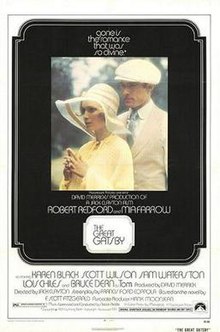
Francis Ford Coppola is an American film director, producer and screenwriter. He is considered one of the leading figures of the New Hollywood film movement of the 1960s and 1970s and is widely considered one of the greatest directors of all time. He is the recipient of five Academy Awards, six Golden Globe Awards, two Palmes d'Or and a British Academy Film Award (BAFTA).
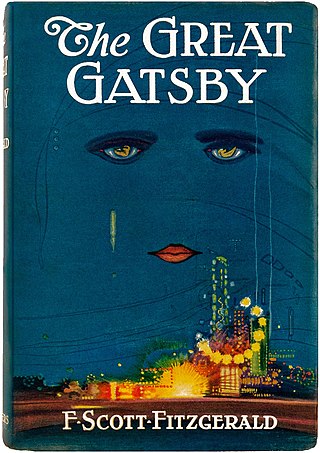
The Great Gatsby is a 1925 novel by American writer F. Scott Fitzgerald. Set in the Jazz Age on Long Island, near New York City, the novel depicts first-person narrator Nick Carraway's interactions with mysterious millionaire Jay Gatsby and Gatsby's obsession to reunite with his former lover, Daisy Buchanan.

Maria de Lourdes Villiers Farrow is an American actress. She first gained notice for her role as Allison MacKenzie in the television soap opera Peyton Place and gained further recognition for her subsequent short-lived marriage to Frank Sinatra. An early film role, as Rosemary in Roman Polanski's Rosemary's Baby (1968), saw her nominated for a BAFTA Award and a Golden Globe Award for Best Actress. She went on to appear in several films throughout the 1970s, such as Follow Me! (1972), The Great Gatsby (1974), and Death on the Nile (1978). Her younger sister is Prudence Farrow.
Jack Isaac Clayton was a British film director and producer who specialised in bringing literary works to the screen.
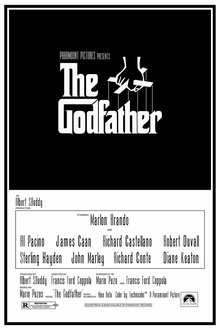
The Godfather is a 1972 American epic crime film directed by Francis Ford Coppola, who co-wrote the screenplay with Mario Puzo, based on Puzo's best-selling 1969 novel of the same title. The ensemble cast includes Marlon Brando, Al Pacino, James Caan, Richard Castellano, Robert Duvall, Sterling Hayden, John Marley, Richard Conte, and Diane Keaton. It is the first installment in The Godfather trilogy, chronicling the Corleone family under patriarch Vito Corleone (Brando) from 1945 to 1955. It focuses on the transformation of his youngest son, Michael Corleone (Pacino), from reluctant family outsider to ruthless mafia boss.

Jay Gatsby is the titular fictional character of F. Scott Fitzgerald's 1925 novel The Great Gatsby. The character is an enigmatic nouveau riche millionaire who lives in a luxurious mansion on Long Island where he often hosts extravagant parties and who allegedly gained his fortune by illicit bootlegging during prohibition in the United States. Fitzgerald based many details about the fictional character on Max Gerlach, a mysterious neighbor and World War I veteran whom the author met in New York City during the raucous Jazz Age. Like Gatsby, Gerlach threw lavish parties, never wore the same shirt twice, used the phrase "old sport", claimed to be educated at Oxford University, and fostered myths about himself, including that he was a relation of the German Kaiser.
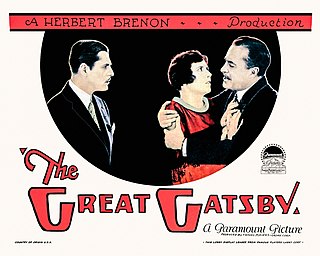
The Great Gatsby is a 1926 American silent drama film directed by Herbert Brenon. It was the first film adaptation of the 1925 novel of the same name by F. Scott Fitzgerald. Warner Baxter portrayed Jay Gatsby and Lois Wilson portrayed Daisy Buchanan. The film was produced by Famous Players–Lasky, and distributed by Paramount Pictures. The Great Gatsby is now considered lost. A vintage movie trailer displaying short clips of the film still exists.
The Great Gatsby is a 1925 novel by F. Scott Fitzgerald.

The Great Gatsby is a 1949 American historical romance drama film directed by Elliott Nugent, and produced by Richard Maibaum, from a screenplay by Richard Maibaum and Cyril Hume. The film stars Alan Ladd, Betty Field, Macdonald Carey, Ruth Hussey, and Barry Sullivan, and features Shelley Winters and Howard Da Silva, the latter of whom later returned in the 1974 version. It is based on the 1925 novel The Great Gatsby by F. Scott Fitzgerald. Set during the raucous Jazz Age on Long Island near New York City, the plot follows the exploits of enigmatic millionaire and bootlegger Jay Gatsby who attempts to win back the affections of his former lover Daisy Buchanan with the aid of her second cousin Nick Carraway.

The Great Gatsby is a 2000 British-American historical romantic drama television film, based on the 1925 novel of the same name by F. Scott Fitzgerald. It was directed by Robert Markowitz, written by John J. McLaughlin, and stars Toby Stephens in the title role of Jay Gatsby, Mira Sorvino as Daisy Buchanan, Paul Rudd as Nick Carraway, Martin Donovan as Tom Buchanan, Francie Swift as Jordan Baker, Heather Goldenhersh as Myrtle Wilson, and Matt Malloy as Klipspringer. The film aired on March 29, 2000 in the United Kingdom on BBC, and on January 14, 2001 in the United States on A&E.

Daisy Fay Buchanan is a fictional character in F. Scott Fitzgerald's 1925 novel The Great Gatsby. The character is a wealthy socialite from Louisville, Kentucky who resides in the fashionable town of East Egg on Long Island during the Jazz Age. She is narrator Nick Carraway's second cousin, once removed, and the wife of polo player Tom Buchanan, with whom she has a daughter. Before marrying Tom, Daisy had a romantic relationship with Jay Gatsby. Her choice between Gatsby and Tom is one of the novel's central conflicts. She was described by Fitzgerald as a "golden girl".

Nick Carraway is a fictional character and narrator in F. Scott Fitzgerald's 1925 novel The Great Gatsby. The character is a Yale University alumnus from the American Midwest, a World War I veteran, and a newly arrived resident of West Egg on Long Island, near New York City. He is a bond salesman and the neighbor of enigmatic millionaire Jay Gatsby. He facilitates a sexual affair between Gatsby and his second cousin, once removed, Daisy Buchanan which becomes one of the novel's central conflicts. Carraway is easy-going and optimistic, although this latter quality fades as the novel progresses. After witnessing the callous indifference and hedonism of the idle rich during the riotous Jazz Age, he ultimately chooses to leave the eastern United States forever and returns to the Midwest.

The Great Gatsby is a 2013 American historical romantic drama film based on the 1925 novel of the same name by F. Scott Fitzgerald. The film was co-written and directed by Baz Luhrmann and stars an ensemble cast consisting of Leonardo DiCaprio, Tobey Maguire, Carey Mulligan, Joel Edgerton, Isla Fisher, Jason Clarke, Amitabh Bachchan, and Elizabeth Debicki. Filming took place from September to December 2011 in Australia, with a $105 million net production budget. The film follows the life and times of millionaire Jay Gatsby (DiCaprio) and his neighbor Nick Carraway (Maguire) who recounts his interactions with Gatsby amid the riotous parties of the Jazz Age on Long Island in New York.

Francis Scott Key Fitzgerald was an American author of novels and short stories, whose works are the paradigmatic writings of the Jazz Age. He is widely regarded as one of the greatest American writers of the 20th century. Fitzgerald is considered a member of the "Lost Generation" of the 1920s. He finished four novels: This Side of Paradise, The Beautiful and Damned, The Great Gatsby, and Tender Is the Night. A fifth, unfinished novel, The Last Tycoon, was published posthumously. Fitzgerald also wrote many short stories that treat themes of youth and promise along with age and despair.
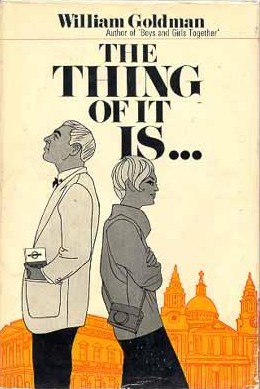
The Thing of It Is... is a 1967 novel written by William Goldman about Amos McCracken, a 31-year-old man who has written a popular show tune and who is having marriage troubles.
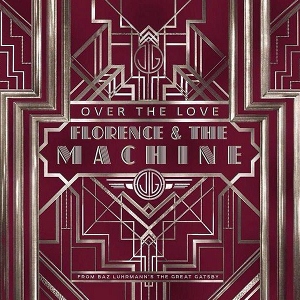
"Over the Love" is a song recorded by English indie rock band Florence and the Machine for the soundtrack to Baz Luhrmann's 2013 film adaptation of F. Scott Fitzgerald's 1925 novel, The Great Gatsby. It appears as the seventh track on the soundtrack. The song was released as the first promotional single from the album on 17 April 2013, available to stream on SoundCloud in the weeks leading up to the soundtrack's release.

Cesare Barbetti was an Italian actor and voice actor.
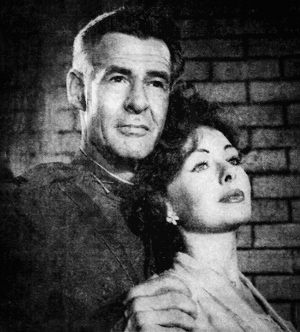
"The Great Gatsby" is an American television play broadcast live on June 26, 1958, as part of the second season of the CBS television series Playhouse 90. David Shaw wrote the teleplay, adapted from the novel of the same name by F. Scott Fitzgerald. Franklin Schaffner directed. Jeanne Crain, Robert Ryan, and Rod Taylor starred, and Rod Serling was the host.
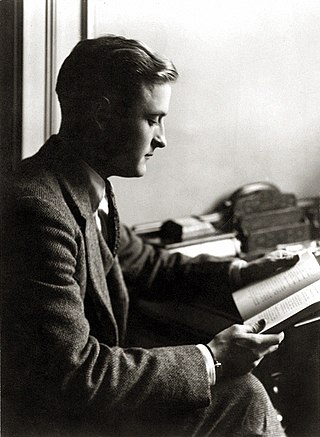
F. Scott Fitzgerald was an American writer known for his novels and short stories which often celebrated the decadence and excess of the Jazz Age. Many of his literary works were adapted into cinematic films, television episodes, and theatrical productions. Although a number of his works were adapted during his lifetime, the number of adaptations greatly increased following his death, and several cinematic adaptations gained considerable critical acclaim.

Celestial Eyes is a painting made in 1924 by Spanish painter Francis Cugat and preserved at the Princeton University Library for the Grafic Arts Collection.
